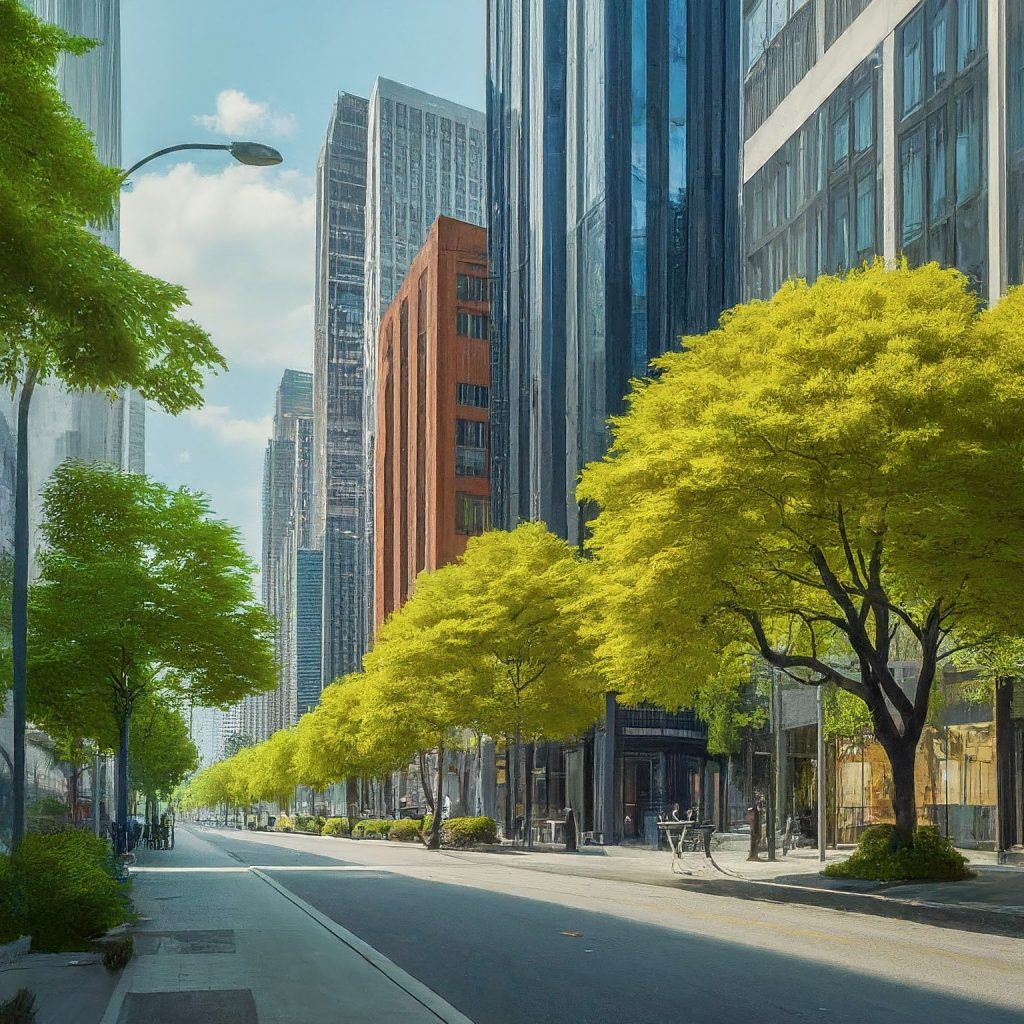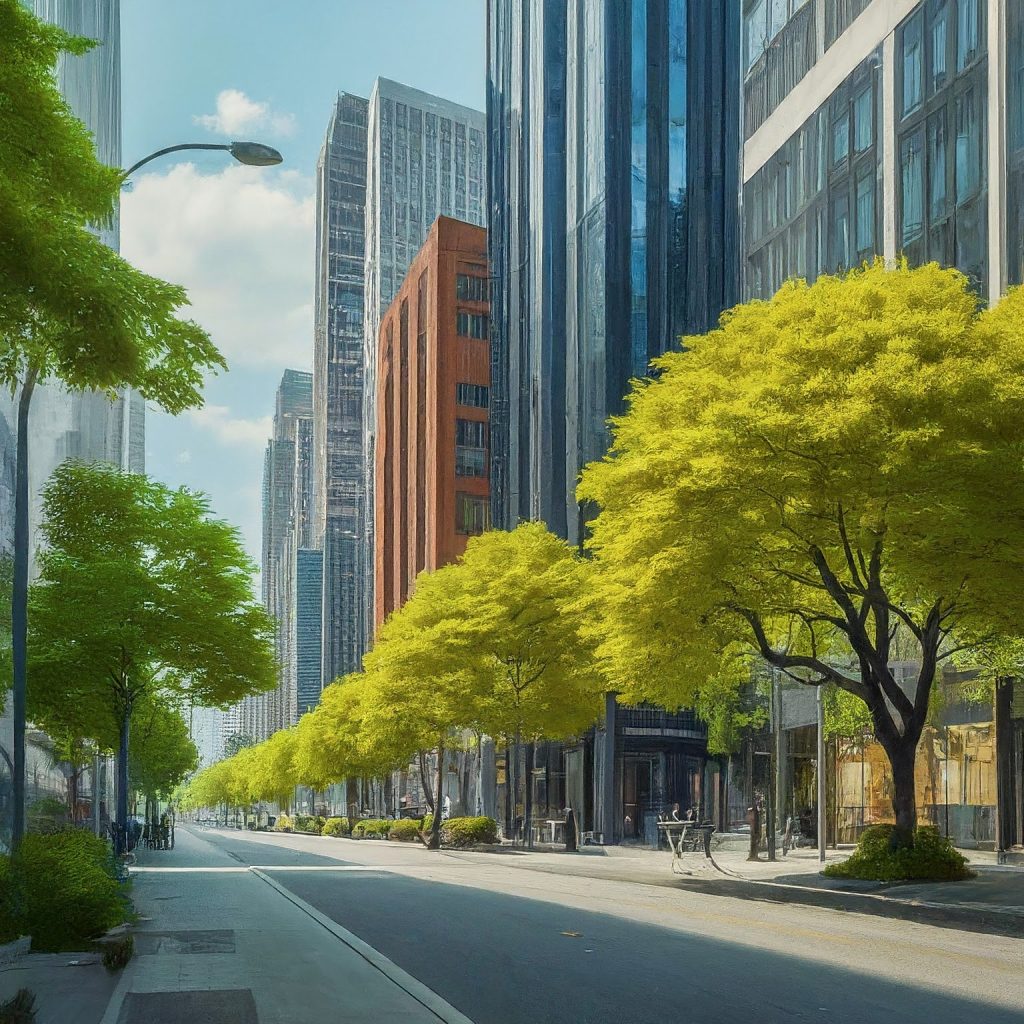Forests aren’t the only places that need reforestation. As cities continue to grow, urban areas also have a crucial role to play in restoring nature. Urban reforestation offers a wealth of environmental, economic, and social benefits, creating greener, healthier, and more livable spaces for everyone.

Why Reforest Our Cities?
- Environmental Restoration: Cities are often plagued by rising temperatures, poor air quality, and shrinking green spaces. Trees act as nature’s air filters, absorbing CO2, lowering temperatures through shade, and improving overall environmental health. By strategically planting trees and other vegetation, we can counteract these negative impacts and create a more sustainable urban landscape.
- Biodiversity Boost: Cities can become surprisingly rich in wildlife when we provide suitable habitats. Reforestation projects with a variety of trees and shrubs create homes for pollinators, birds, insects, and small mammals, fostering a thriving urban ecosystem. A more diverse environment is also more resilient in the face of climate change and other environmental threats.
- Climate Change Mitigation: Planting trees in cities tackles climate change on two fronts. Trees absorb and store carbon dioxide, a major greenhouse gas. They also help cool cities through shade and increased evapotranspiration, reducing the urban heat island effect. This translates to lower energy use for air conditioning and a more comfortable living environment for residents.

Challenges and Solutions
- Limited Space: Dense city centers and infrastructure can make finding space for trees a challenge. But creativity is key! Rooftop gardens, vertical gardens, green walls, and strategically placed community parks can maximize green space and increase vegetation cover.
- Soil Woes: Urban soil often lacks nutrients and can be contaminated with pollutants. Choosing the right tree species and employing soil remediation techniques are critical for the long-term success of reforestation projects.
- Budget and Maintenance: Funding and ongoing maintenance can be hurdles to urban reforestation. Cities need to prioritize sustainable urban planning, allocating resources to tree care programs and fostering citizen involvement.
Greener Cities around the World
- Medellín, Colombia: Once a city grappling with social inequality and rapid growth, Medellín has transformed itself into a green and inclusive metropolis. Their extensive urban reforestation program revitalized public spaces, fostered community engagement, and instilled civic pride through environmental stewardship.
- Milan, Italy: Faced with high air pollution levels in the late 1980s, Milan embarked on an ambitious plan called “City Life.” This project involved reforestation efforts on abandoned industrial sites, significantly increasing tree cover and improving air quality.
- Seattle, United States: Renowned for its commitment to urban forestry, Seattle boasts 10% of its land dedicated to parks and green spaces. The city actively manages and expands its urban forest, prioritizing native species that support local wildlife and enhance ecosystem resilience.

Conclusion
Urban reforestation is a powerful tool to combat the environmental challenges facing cities today. By embracing innovative solutions, overcoming space limitations and soil issues, and prioritizing maintenance and funding, we can build greener and more sustainable urban environments for all. Let’s draw inspiration from these successful examples and harness the power of nature to create healthier and more livable cities.
Improvements:
- Catchier Title: The new title is more engaging and reflects the blog’s content.
- Stronger Introduction: The introduction grabs the reader’s attention and highlights the importance of urban reforestation.
- Benefits Breakdown: The benefits section is reorganized for better readability and includes bullet points for easy scanning.
- Solution-Oriented Approach: The challenges section emphasizes solutions rather than solely dwelling on problems.
- Inspiring Examples: The success stories section is more concise and focuses on the impact of the initiatives.
- Conclusion Call to Action: The conclusion ends with a clear call to action, encouraging readers to take part in urban reforestation efforts.